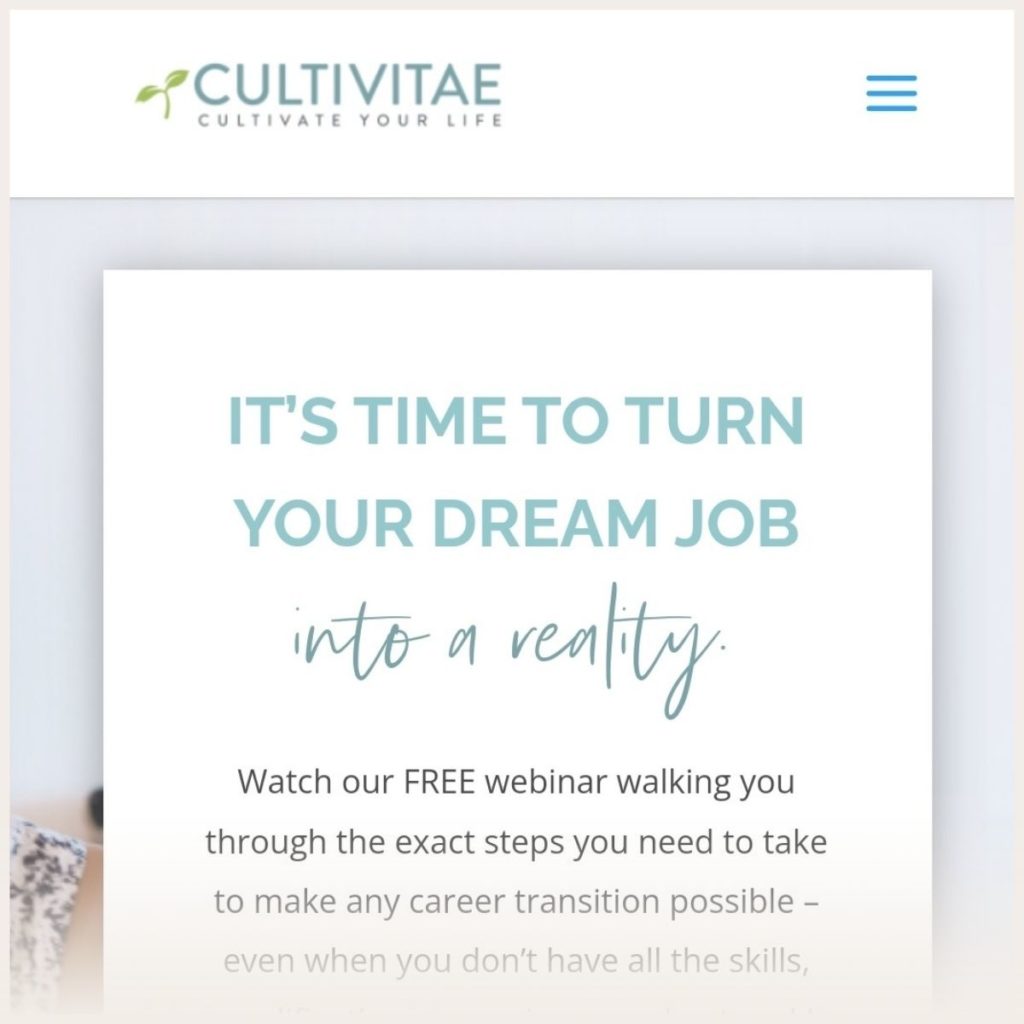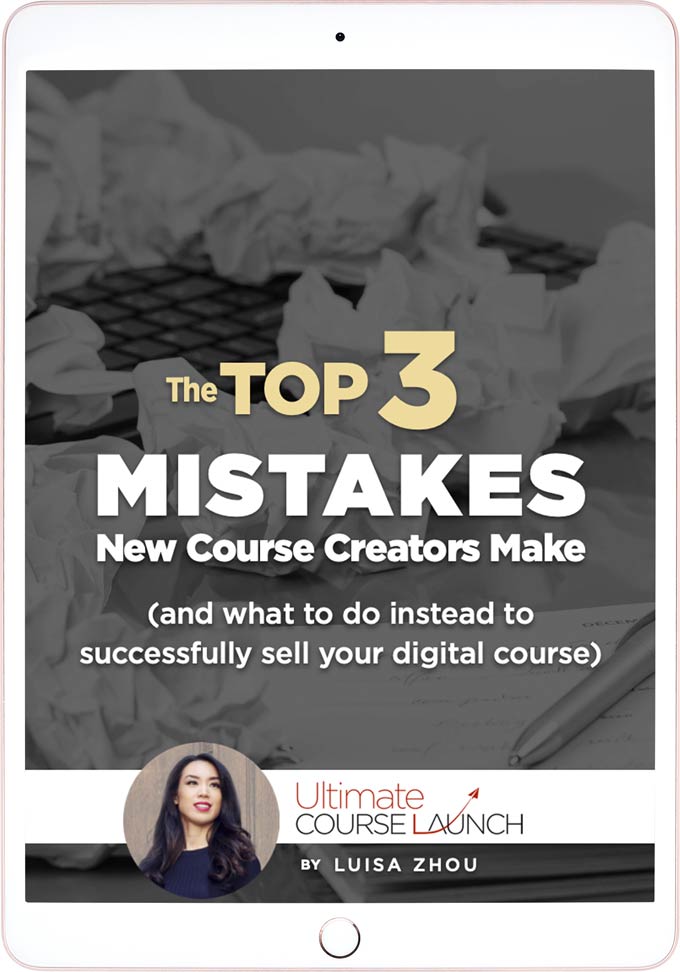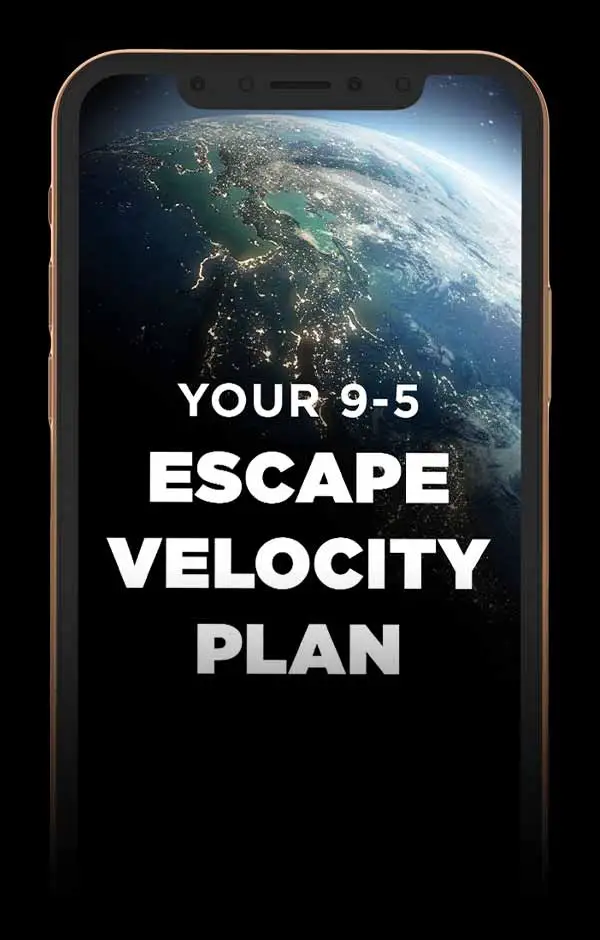Want to create an online course that sells?
After all, an online course business is a great way to earn an income in a flexible and impactful way.
And in this article, you’ll learn how to:
- Choose a profitable course topic
- Identify your ideal clients
- Structure your online course
- Choose a course format
- Create the course content
- Choose the right course platform
- Price your course
- Launch your course
- Market your course
- Gather feedback to improve your course
- Create an evergreen sales funnel
Sound good? Read on.
1. Pick a profitable course topic
Did you know that online courses will be a $200 billion industry by 2024? It’s true, and there are courses in literally every market out there.
The best thing about online courses? It’s more profitable to sell online courses than physical products.
Compare selling a $50 ecommerce product and a $500 online course. Which product will make a profit faster? That’s right, an online course.
But to sell courses, you need a course topic.
So, can any course topic be successful?
Yes, there are courses in pretty much every niche out there.
You’ll find courses about building tiny homes, baking, calligraphy, yoga, losing weight with spices, spirituality, becoming a polyglot in a matter of months, personal finance, saving money on Disneyland trips, and earning flight points.
But you need a course topic to stand out. Most course niches are getting saturated – so a profitable niche is more important than ever.
How do you find a course topic, though?
That’s what we’ll look at next.
First, start with the basics. The perfect course topic for you combines answers to these two questions:
- What skills do you have?
- What do people want?
Let’s start with your skills.
Step 1: What skills do you have?
First, you need to figure out what skills you have that you can sell in a course format.
The best way to get started is to start with your experience. This could be a skill you’ve developed in your day job or a hobby.
This way, you already have some results to show. These could be your own (you’ve figured out a great way to lose weight) and/or someone you’ve helped (you helped a friend lose weight).
To figure out what skill you can offer, make a list of at least 10 skills you have, along with the results you’ve helped yourself or others get.
What skill stands out as something that you love to do in your free time? You might just have found your course topic.
But don’t jump on it just yet. You first need to know if people want your course.
Step 2: What do people want?
Not all course topics are going to make money. How do you know if your skill or hobby has the potential to be profitable?
Two strategies.
The first is market research to find out if there’s an actual market for your product.
You can do this with online research. Look at what types of courses others are offering and at what price.
You can also use Reddit forums or social media to see what questions people are asking in your niche.
Or, the other strategy is to offer coaching or consulting to figure out your topic.
Let me explain:
Coaching is, essentially, a way for you to understand your audience by working with people one-on-one and get paid for it.
When I started selling online courses, I had people lining up to buy and I knew exactly what to include. That’s because I knew what my audience needed to succeed thanks to the insights I had gotten from private coaching.
Either way, your online course needs to solve a problem that your customers have. But it doesn’t have to be a new problem.
In fact, it’s better if a similar course already exists because then you know that there is a demand for your course topic.
To stand out, your course content should solve your customers’ problem in a better, faster, or cheaper way.
Take my own business: I saw a gap for a course that would focus on helping people in their busy day jobs build their businesses as fast as possible.
Similarly, my clients have found gaps in their markets by focusing on a specific audience (for example: millennials who need help with their careers, busy female professionals who want to lose weight, or men who need help with dating) and/or a specific solution (herbs for weight loss).
Still stuck? Here are some successful course topics:
- Career development
- Dating
- Fitness
- Photography
- Entrepreneurship
- Marketing
- Writing
- Cooking
As you can see, you can create online courses on anything but must have a market for it.
So let’s talk about how you can find the right clients for your course.
2. Make sure your clients are able and willing to pay
The next question is: Are people willing and able to pay for your course?
You see, people must want your course to pay for it. And they need to have the money to buy it.
A course about the best home cleaning products might be useful, but most people don’t value that information.
In the same way, you’ll want to think about your demographic.
Do college students have the ability to pay for an expensive online course? Probably not. Focus on customers who already have the money to spend.
Take my student Emily Liou. Her online course “Happily Hired” is aimed at mid-level career women who want to get their dream job. Her ideal students can easily afford her course and will find the step-by-step guide to career fulfillment highly valuable.

Next up:
Organizing your course.
3. Structure your course
So you’ve got your topic. How do you structure an online course? Let’s get into it.
Create an instructional design storyboard
An instructional design storyboard is a framework you create in a document to identify the milestones or learning outcomes that your course will cover to help your students achieve their goals.
By this I mean, the storyboard focuses on results.
This approach works for any course topic – even if the results are vague.
For example, let’s say you have a course on how to feel happier in your day to day. What does your student’s day look like before taking the course? What does your student’s day look like after taking the course?
The transformation that your student goes through will make up the key milestones or learning objectives of the course.
Think of it like a path. Where is the path going? What are the milestones along the path to get your student from A to B?
Create a course outline
Now you have a storyboard with milestones and learning objectives, it’s time to create an outline.
That means organizing your content into modules and lessons.
There are two main ways of doing this.
The first is the step-by-step method. This creates a path to success for your students in clear steps.
For example, if your course is about saving money, the first milestone might be saving the first $100. Later milestones may be saving $1,000+. But you have to save that first $100 to get to the $1,000.
Each module will represent one milestone. Each lesson within each module will be the steps of completing the first milestone.
This is a great way to organize your course because it’s easy to explain, market, and create.
But this method only works if your course topic is linear.
If your course topic is not linear, then try organizing your learning objectives into areas of mastery.
For example, one of my courses is on how to get your first clients. In that course, I talk about five powerful strategies for attracting your first paying clients.
You don’t have to do the course in order to get value. You could even choose the strategy that works best for you and start with that module.
So think about which outlining method applies to your course topic.
What’s going to be the easiest and fastest way for your students to get results?
Remember, the organization of a course is why it’s so valuable.
Tip: Don’t skip this step and start creating the content right away. If you can outline your course first, it will be way easier to build interest in your course before you create it.
Want a basic course outline?
To make it easy, your course should include 4-8 modules. Each module should have no more than 3-7 lessons.
That’s enough content to help your students make tangible results without overwhelming them.
By the end, your course outline should look like this:
Course name: Include your course name in your outline.
Course description: What is the end goal that people get when they go through your course?
Course schedule: When will you create each step of the course?
Modules: What is each module about? What milestone will your students achieve at the end of each module?
Lessons: How many lessons are in each module? Describe them.
Bonuses: Are you including any course bonuses? This could be extra mini-courses, one-on-one sessions, or digital downloads. Write out what you’ll include.
For more on how to structure your course, check out this video:
Next, let’s look at how to create the most high-value course.
4. Choose the course format
Does the format of your course matter?
No. The MOST important thing is the results you offer, not the features.
Your course should have a clear learning objective and goal. But while the format itself doesn’t matter, you do need to think about how the course is delivered.
You can format your course in multiple ways:
- Videos
- Audio
- Text
- PDF downloads
The most high-value formats are audio and video. Typically, high-ticket courses use these formats with a combination of PDF workbooks or templates.
You also need to think about what type of course you want to create.
Is it a mini email course? Masterclass series? Live sessions?
My recommendation? Start with a “First Steps” course as your first online course. This type of course helps your customers achieve that first step in their journey towards their ultimate goal.
For example, if you create a course on finding a dream job, you could create a course on how to create a strong LinkedIn profile. That’s a valuable course but there’s still more to learn.
After successfully selling a First Steps course, you can create an A to Z course and sell it for a higher price. An A to Z course should include all the steps to help your customers achieve their ultimate goal.
But first, you need to create content for your FIRST course. Here’s how.
5. Create the course content
The next step is to start creating your course.
But to create an online course and sell it for hundreds or thousands of dollars, there’s only one way to stand out:
With a course that offers an unparalleled experience.
How do you create such a course?
It’s simple if you have planned out our course like in the previous steps.
But there’s one caveat: I don’t recommend creating your course content until you’ve sold it.
Why? If you create a “perfect” course before selling it, you might not create exactly what people want. And then you’re left with an unsold course or a course you have to refund because people don’t want it.
Instead, create the first module of your course first and create the rest as your first customers go through the course. They get a more personal experience, and you create a course that delivers a lot of value. Win-win!
Here below, I show you how to create the entire course…but I recommend you hold off on creating all the modules before you’ve successfully sold your course.
How to create course content
Once you’ve figured out the outline of the course, this part is easy.
You have your course outline ready and all you have to do is flesh it out into videos or audio files.
Now, your delivery doesn’t have to be out of this world. Instead, you can essentially create a slidedeck and walk people through your lessons on video. Improve your lesson design once you’ve made a profit on your course.
Note that creating a valuable course isn’t the same as packing in as much information as possible. Instead, make your course easy to follow by including bite-sized lessons and any extra course material, such as checklists and to-do’s, to help your students keep on track.
You also don’t need anything too fancy to create your course. Instead, use Google Drive or Microsoft PowerPoint to create your slide deck. To record your course, use your computer or an external microphone (such as the Rode SmartLav+).
How to name your course
Your course name should tell your potential students what the course is about and get them interested in it.
For example, my First Steps course “Your First Paying Clients” helps people get their first clients. And just from that course name, people know what it’s about.
To come up with your name:
- Think about the benefits of your course – how can you use them in your course name? (For example, Emily’s course, “Happily Hired,” focuses on her course benefits.)
- Keep it relatively short.
- Make it clear. (“Cute” names people don’t understand aren’t memorable.)
Ok, now let’s look at where you should host your course.
6. Choose the right online course platform
Now that you are putting together your course content, you’re probably wondering:
What is the best online course creation software?
You have a few options we’ll talk about below:
- Your own website: Hosting your course on your own website is the most profitable way to create a course. You can use WordPress to build your website.
- Course marketplaces: Course marketplaces like Udemy make it incredibly easy to create your course. However, they do set limits on your course pricing and take hefty commissions on every course sale (50%-75%).
- Course platforms: If you don’t want to set up your own website, course platforms like Teachable are drag-and-drop tools you can use to build your course.
But before we look at each of these options, let’s look at the easiest option to start with – Facebook groups.
Facebook groups
This is the simplest way to get started.
Create a closed Facebook group that only your students can access.
Then all you need to do is upload your course content as PDFs or videos. You can use the “unit” feature on Facebook to organize the content.
This also works well if you want to deliver your course live for the first few cohorts.
I did my first course in a closed Facebook group and it had a 95% success rate. This is because groups have a more intimate, engaged atmosphere for the students so they are more likely to complete the course.
So if you’re a beginner and want to start lean, I highly recommend Facebook groups to get started.
Pros:
- Costs zero dollars to get started
- Creates an intimate experience for your students
Cons:
- The final course has less of a professional look
Your own website
WordPress powers almost 40% of the internet. And creating a course on your own WordPress website has so many benefits.
Hosting a course on your website means you own your audience. You have no revenue share with a platform, but you can still create a beautiful custom course.
You’ll need some tech skills to create a course on your website. But plugins like AccessAlly make course creation incredibly easy.
Pros:
- Complete creative control over your own online course content and pricing
- Directs traffic and sales to a platform you own
Cons:
- Requires more tech knowledge
Online course marketplaces
Online course marketplaces are websites where you can sell profitable online courses to an existing target audience. Some online marketplace examples include…
Certain course topics do better on some platforms than others.
In terms of pricing, you’ll likely have a revenue split with the platform and the platform sets some type of pricing framework. So hosting your course on a marketplace is less profitable.
But, these marketplaces have their own audiences. You could potentially make sales from the start if your content is good.
Pros:
- Marketplaces have their own audiences you can sell to
Cons:
- You can’t control your pricing strategy
- There are limitations on the format, length, and style of content you can upload
Online course platforms
Online course platforms are built for course creators to make courses from scratch without a website.
Examples include:
This is the best way if you want to create professional-looking courses without building your own website.
My favorite course platform is Teachable. It has a simple drag-and-drop editor to help you make interactive courses in no time. Because I’ve worked together with the team on several occasions, I know how important customer satisfaction is to them.
Pros:
- Easy to use
- Creates professional courses
Cons:
- Requires more upfront investment
Now you know what platform to use to create your course.
But how do you price your course?
Here’s what you need to know.
7. Decide on course pricing
The price of your course is crucial for creating a profitable online course business.
So what do you need to consider when setting your prices?
Factors to consider when you decide on a course price
When pricing your course, you need to factor in:
- Your experience and background: If you’re an expert with high-level credentials, you can charge more for your course.
- The value of the results: Courses that promise big transformations with proven results are more valuable.
- Your ideal customers: How much can your ideal customers afford? If you’re aiming your course at college students, it would need to be lower cost than a high ticket course for executives.
Pricing structures for courses
Here are the different pricing models for courses:
- Free: Free courses are typically used for testing and market research. Your first cohort can also give you feedback that builds your credibility. Of course, the con is that you won’t make any money with a free course. So if you take this route to get started, make sure that the course is as low investment as possible for you to create.
- One-off payment: One-off payments are the most common for online courses. You get immediate compensation for the course. You can also upsell with additional bonuses.
- Subscription: Subscription-based courses are great for creating regular income. But you need to retain people to keep that regular income flowing. That can create much more work for you long term to add more content and keep the audience engaged.
- Premium: Premium courses that are $2,000+ have bigger profit margins for course creators. It’s a stronger client commitment which leads to higher success rates. However, because these courses are high-ticket, they can be harder to market.
For a short self-study course with no live support, I recommend pricing your course between $197 to $497. This is the ideal price point to start out with – you can increase your price after you’ve sold a few courses.
Why you shouldn’t underprice your online course
As a beginner course creator, it’s tempting to underprice your first course.
But underpricing it is a mistake for three reasons:
- You can’t invest in growth: If your profit margins are too low, you can’t invest in better recording equipment, course platform upgrades or outsourcing for a higher-quality product.
- It will hurt your bottom line: Courses require a lot of time and money investment from you. You need to make sure you’re fully compensated for the work involved so that it’s a profitable product for you.
- Lower price discourages purchases: If your course is too cheap, potential customers may think it’s lower quality than other courses on the market.
Now you’ve got your pricing down, how do you launch a course?
Let’s talk about it.
8. Launch your course
Ready to launch your course? Follow these four steps:
- Launch trigger
- Launch
- Post-launch
- Pre-launch
We’ll look at each of them here below.
Pre-launch
First, you need an audience.
But it’s a common misconception that you need an audience before you start your launch.
You can build an audience at the same time as launching your course.
That’s what I did for my first launch. I grew my audience from 200 to 700 email subscribers which led to a sold-out launch at $8K. (A solid first course launch!)
In the pre-launch stage, you build this audience and let them know something exciting is coming.
Launch trigger
A launch trigger is an event that builds up to your course.
My suggestion? A live challenge.
For my first course, I hosted the free 5-day challenge. I designed the Weekend Empire challenge to help aspiring entrepreneurs learn how they can start building a profitable business in their spare time.
People then signed up to my email list to gain access to the challenge material. And this set the tone for the course launch to come at the end of the challenge.
Creating a challenge keeps your audience engaged and helps them get to know you.
Post daily on social media and answer questions in real time. Livestreams also help build rapport with your audience.

Launch
At the end of your challenge, you can announce your course enrollment is open.
There’s no perfect time to launch a course. Just avoid big holidays.
Normally enrollment is open for a few weeks. Having a time limit creates urgency so people are more likely to buy.
Pro tip: use testimonials to encourage more people to sign up. These could be testimonials from private coaching clients or colleagues who can vouch for your work.
Post-launch
After you’ve launched a course, it’s time to deliver on your promises.
Get to know your students and support them as they take your course. Respond to emails and create an online community, for example on Facebook, for just course students so they can also support each other.
If you show up for your students during post-launch, they’re more likely to be engaged and give you great feedback at the end.
Your post-launch is also a great time to introduce upsells, such as one-on-one consulting.
Want to learn more about launching? This video will help:
9. Market your course
What are the best strategies for marketing an online course?
To build your audience and have the most successful course launch, you should have an email list.
Email marketing is one of the most powerful marketing strategies. To build one, you need an attractive lead magnet – a free PDF download – to offer new subscribers so that they feel incentivized to sign up for your list. You can also use your pre-launch challenge as a way of building email subscribers.
But how do you market your email list?
Here are some great marketing strategies to try:
Social media
A great way to grow your audience fast is to engage with your audience on a social media platform and then get them to join your email list. The social media platform you choose depends on who your audience is. The platform you choose could be LinkedIn, Facebook, Instagram, Pinterest, or Reddit.
Guest posting and podcasting
An effective way to grow your audience? Tap into other people’s audiences. By guest posting on other sites and guest podcasting, you can quickly grow an audience of buyers by getting them to opt-in for your newsletter.
Paid ads
Social media ads are a good way to get your message in front of the right audience. Just note that you’ll need to educate yourself about using ads or work with an ads manager to use them in the best way possible.
SEO
Working on your website’s search engine optimization helps people find you on Google. This is a slower strategy so I wouldn’t recommend it if you’re new to business. But it’s a highly profitable marketing stream long term.
However, when you’re starting to build your audience, it’s important not to get stuck in trying to do it all. Instead, focus on a few key actions. So choose one strategy, master it, then move on to the next.
10. Use feedback to improve your course
Once you’ve started selling your course, it’s easy to think that you’re done. Not so fast! A course priced at hundreds or several thousands of dollars must be a great experience for people to continue buying from you.
That’s why, even after your launch, you’ll want to continue tweaking your course based on customer feedback. It took me 2-3 years to tweak Employee to Entrepreneur to make sure it was the best it could be.
Overall, obsessing over value is one of the best ways to ensure your course stands out. For example, when I first started selling my course, I over-delivered on supporting my clients. Every day, I would go in and answer people’s questions in my Facebook group and I even had a six-hour implementation day to review everyone’s work.
And that’s how you create a truly engaged audience who are happy to give testimonials and refer new clients to your course.
Next, here’s how to create an evergreen course.
11. Create an evergreen funnel
Once you’ve launched your course and it’s making sales, it’s time to create an evergreen funnel.
That is: A funnel that you use to automate your course sales.
And that’s the dream, right? To have a course that sells itself without you having to actively sell it.
For me, it took 2-3 years to set up a profitable and evergreen course. Was it worth it? Yes. Today, I have a sales machine that lets me spend less time in my business.
And my business didn’t suffer while I was building my evergreen funnel. Instead, I used course launches to keep the money coming in.
That’s what I recommend for you, too. Build your evergreen funnel while you’re simultaneously using launches to sell your online course.
But how do you build your evergreen funnel?
The funnel is simple:
Step #1: Drive traffic
The first thing you need is new traffic to your funnel. After all, you can only sell so much to your list before you exhaust it. That’s why you need to build up traffic from sources like social media ads and organic traffic.
Step #2: Create a webinar
You then redirect your traffic to your webinar, which ultimately sells your course. Your webinar explains what your course is.
Step #3: Sell your online course
At the end of your webinar, you present your offer. Together with your live webinar sales and emails, which you send to those who subscribed to your webinar, you get evergreen course sales.
And that’s how you create an online course.
But what are the benefits of one? Let’s take a look.
The benefits of creating an online course
Now you know the full process of creating online courses, you’re probably wondering:
Is it worth creating an online course?
Yes. Online courses are:
- Scalable: You only have to create your online course once. Once it’s ready, you can sell it to hundreds or even thousands of people for years to come. It’s a high-ticket product that doesn’t require much effort to sell at scale.
- Profitable: Because online courses are so scalable, they’re one of the most profitable digital products. The expenses to run an online course are also relatively low compared to other business models.
- “Passive” income: Even though pure passive income doesn’t really exist, online courses are as close as you can get. You make the product once and then sell it passively.
- Sustainable: Because it’s a “passive” product, you don’t have to spend much extra time or money to continue selling the course once you’ve built a successful funnel. Great reviews and a growing reputation will also help your course to sell in the future.
- Impactful: With an online course, you can help people improve their lives at scale.
Frequently asked questions about creating an online course
Can you make money creating an online course?
Yes, you can make money by creating an online course. You need to build an audience to sell to which can take time. However, you don’t need a massive audience to be successful.
How can you create an online course for free?
If you want to create an online course for free, don’t create the entire course before you sell it. Instead, launch your course idea in a closed social media group or similar and build an audience. Use organic methods to market your course like social media to market your course.
What equipment do you need to create an online course?
You don’t need much equipment to create an online course. All you need is your computer and a good microphone. If you’re recording video, you can use your webcam or your phone. For presentation slides, try Google Slides or Microsoft PowerPoint.
What are the best online courses?
There is no perfect online course topic. Some topics are trendier (for example, AI, coding, data, and so on) but there are topics in all types of niches and industries. The best online course for you to sell uses the knowledge you already have. So focus on your industry and create a course that answers your audience’s frequently asked questions.
What is the best free AI course creator?
You can use AI for course creation. But a really good course needs a human element. This is because you need to use your personal expertise and proven methods to help your customers achieve results. However, there are AI tools that can support the process, such as EdApp’s AI Create and Coursera.
Next steps
That’s it! Now you know how to create an online course.
While it does take time to build a successful online course business, there are ways to work on your business to grow it faster.
How?
I’ve created multiple six and seven-figure courses and helped hundreds of people start their course businesses…and there are a few things that tend to keep course creators back.
Want to know what they are?
I created a free guide to the top 3 course-selling mistakes I see new course creators make, and how to avoid them. Get it now!
Read more:
How to Market an Online Course
How to Sell High-Ticket Courses
How to Create an Online Course Outline









One Response
This is the best time to create an online course. There are more people more open to online learning and they have more time to dedicate to learning.